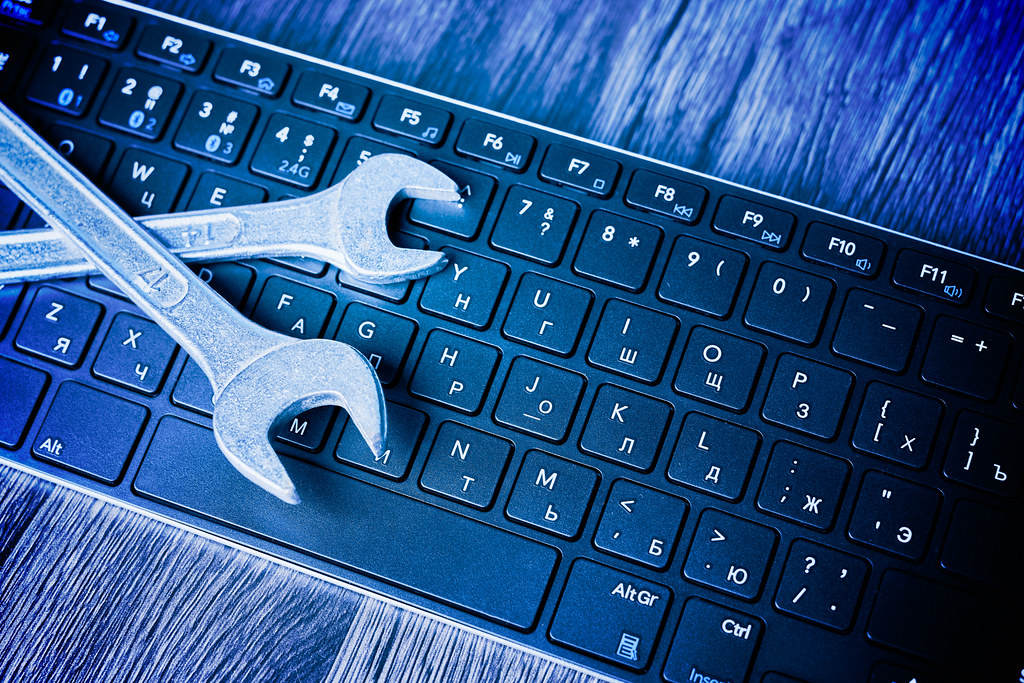In the digital era, the personal computer (PC) has become an indispensable part of our daily lives, serving as a gateway to information, entertainment, and social interaction. However, like any sophisticated piece of technology, PCs are not immune to problems. The good news is that many common issues can be resolved at home with a bit of know-how and some basic tools. This comprehensive guide covers everything from initial setup to troubleshooting pc tech service and speeding up your PC, ensuring you can handle a wide range of repairs with confidence.
Setting Up Your PC
Choosing the Right Location
- Ventilation: Ensure your PC has enough room around it to prevent overheating.
- Surface: Place your PC on a stable, dust-free surface to avoid physical damage and dust accumulation.
Connecting Peripherals
- Essentials: Connect your monitor, keyboard, and mouse. Ensure they are properly plugged in before turning on your PC.
Powering On
- Check Connections: Verify that all cables are securely connected.
- Initial Setup: Follow on-screen instructions to complete the setup process, including setting up your user account and internet connection.
Basic Troubleshooting Techniques
When Your PC Won’t Start
- Power Supply Check: Ensure the power cable is firmly plugged in. Test the power outlet with another device to ensure it’s working.
- External Devices: Disconnect all external devices. A faulty device can sometimes prevent a PC from starting.
Dealing with Slow Performance
- Startup Programs: Disable unnecessary startup programs. Too many programs running at startup can significantly slow down your PC.
- Disk Cleanup: Use built-in cleanup tools to remove temporary files and free up disk space.
Internet Connectivity Issues
- Router Reset: Turn off your router for 30 seconds and then turn it back on. This can often resolve connectivity issues.
- Driver Update: Ensure your network adapter’s driver is up to date. Outdated drivers can cause connectivity problems.
Intermediate Repairs
Upgrading RAM
- Compatibility Check: Ensure the new RAM is compatible with your motherboard.
- Installation: Power off your PC and disconnect it from the power source. Open the case, locate the RAM slots, and insert the new RAM sticks, ensuring they click into place.
Replacing the Hard Drive with an SSD
- Data Backup: Before replacing your hard drive, back up important data.
- Cloning (Optional): Clone your existing hard drive to the SSD for a seamless transition.
- Installation: Replace the old hard drive with the SSD, reconnecting the SATA and power cables.
Speeding Up Your PC
Managing Software
- Uninstall Unnecessary Programs: Remove programs you no longer use.
- Update Software: Keep your operating system and all installed software up to date to ensure optimal performance and security.
Optimizing Settings
- Power Settings: Adjust your power settings for better performance, especially if you’re using a desktop PC.
- Visual Effects: Reduce or disable visual effects to speed up performance, particularly on older PCs.
Advanced Repairs
Replacing the Power Supply
- Safety First: Always disconnect your PC from the power source before starting any repairs.
- Compatibility: Ensure the new power supply is compatible with your PC’s components and fits in the case.
- Installation: Remove the old power supply, carefully noting where each cable was connected. Install the new power supply and reconnect the cables.
Updating the BIOS
- Check Manufacturer’s Website: Look for an updated BIOS version on your motherboard manufacturer’s website.
- Follow Instructions Carefully: Updating the BIOS can be risky. Follow the manufacturer’s instructions precisely to avoid damaging your motherboard.
Preventative Maintenance
Regular Cleaning
- Dust Accumulation: Use compressed air to clean dust from inside the PC case, focusing on fans and heat sinks to prevent overheating.
Software Maintenance
- Regular Updates: Regularly update your operating system and software to patch vulnerabilities and improve performance.
- Antivirus Software: Use reliable antivirus software and keep it updated to protect against malware.
When to Seek Professional Help
While many PC repairs can be performed at home, certain issues may require professional expertise, especially if they involve complex hardware or software problems. If you’re not confident in performing a repair or if a problem persists despite your best efforts, it’s wise to consult with a professional technician.
Conclusion
Performing home PC repairs can be a rewarding experience, saving you time and money while providing a deeper understanding of the technology you use every day. From setting up your PC to troubleshooting common issues and performing upgrades, this guide equips you with the knowledge needed to keep your PC running smoothly. Remember, regular maintenance is key to preventing many common problems, and when in doubt, don’t hesitate to seek professional assistance. With patience and practice, you’ll become proficient in home PC repairs, ensuring your computer remains a reliable and efficient tool in your digital life.

